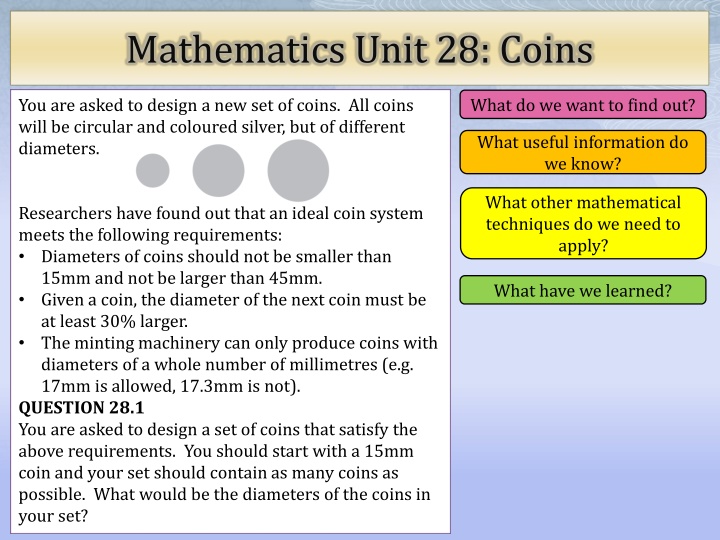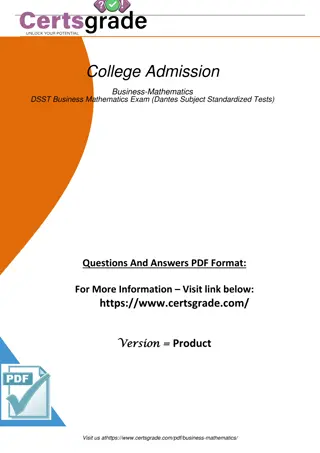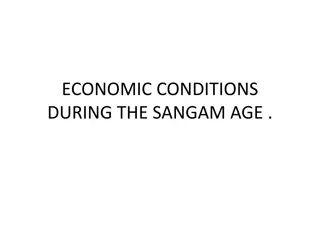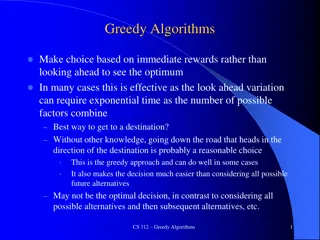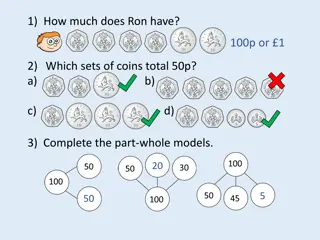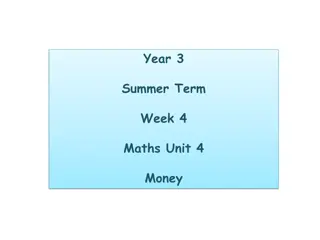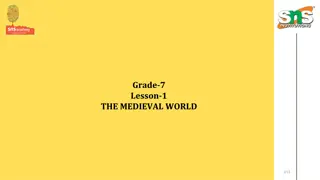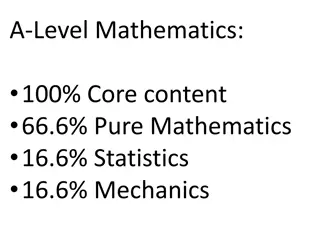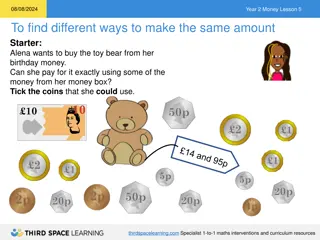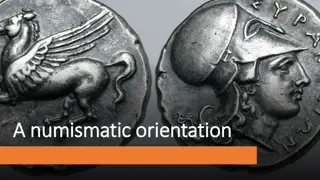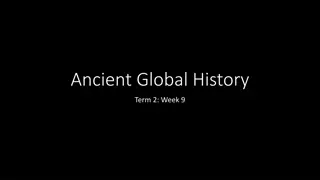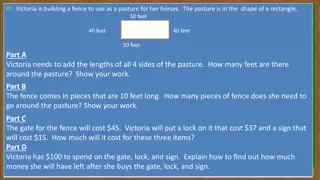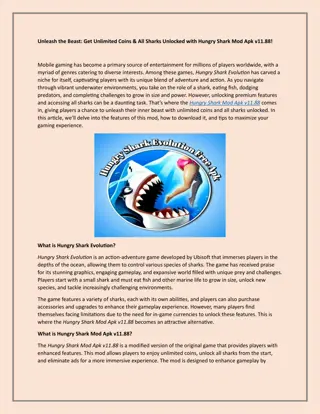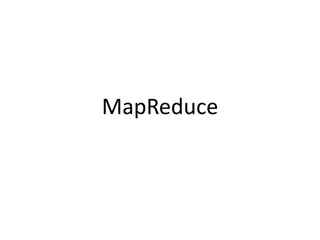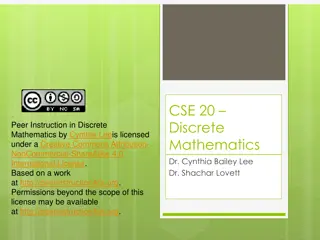Mathematics Unit 28: Coins
To design a set of circular silver coins with diameters between 15mm and 45mm, increasing by at least 30%. The minting machinery can only handle whole number diameters. Explore the optimal coin sizes to maximize the number of coins in the set under these constraints.
Download Presentation

Please find below an Image/Link to download the presentation.
The content on the website is provided AS IS for your information and personal use only. It may not be sold, licensed, or shared on other websites without obtaining consent from the author.If you encounter any issues during the download, it is possible that the publisher has removed the file from their server.
You are allowed to download the files provided on this website for personal or commercial use, subject to the condition that they are used lawfully. All files are the property of their respective owners.
The content on the website is provided AS IS for your information and personal use only. It may not be sold, licensed, or shared on other websites without obtaining consent from the author.
E N D
Presentation Transcript
Mathematics Unit 28: Coins What do we want to find out? What do we want to find out? You are asked to design a new set of coins. All coins will be circular and coloured silver, but of different diameters. What useful information do we know? What useful information do we know? What other mathematical techniques do we need to apply? What other mathematical techniques do we need to apply? Researchers have found out that an ideal coin system meets the following requirements: Diameters of coins should not be smaller than 15mm and not be larger than 45mm. Given a coin, the diameter of the next coin must be at least 30% larger. The minting machinery can only produce coins with diameters of a whole number of millimetres (e.g. 17mm is allowed, 17.3mm is not). QUESTION 28.1 You are asked to design a set of coins that satisfy the above requirements. You should start with a 15mm coin and your set should contain as many coins as possible. What would be the diameters of the coins in your set? What have we learned? What have we learned?
Mathematics Unit 28: Coins What do we want to find out? You are asked to design a new set of coins. All coins will be circular and coloured silver, but of different diameters. What useful information do we know? What useful information do we know? What other mathematical techniques do we need to apply? What other mathematical techniques do we need to apply? Researchers have found out that an ideal coin system meets the following requirements: Diameters of coins should not be smaller than 15mm and not be larger than 45mm. Given a coin, the diameter of the next coin must be at least 30% larger. The minting machinery can only produce coins with diameters of a whole number of millimetres (e.g. 17mm is allowed, 17.3mm is not). QUESTION 28.1 You are asked to design a set of coins that satisfy the above requirements. You should start with a 15mm coin and your set should contain as many coins as possible. What would be the diameters of the coins in your set? What have we learned? What have we learned? Back to start Back to start
Mathematics Unit 28: Coins What do we want to find out? What do we want to find out? You are asked to design a new set of coins. All coins will be circular and coloured silver, but of different diameters. What useful information do we know? What other mathematical techniques do we need to apply? What other mathematical techniques do we need to apply? Researchers have found out that an ideal coin system meets the following requirements: Diameters of coins should not be smaller than 15mm and not be larger than 45mm. Given a coin, the diameter of the next coin must be at least 30% larger. The minting machinery can only produce coins with diameters of a whole number of millimetres (e.g. 17mm is allowed, 17.3mm is not). QUESTION 28.1 You are asked to design a set of coins that satisfy the above requirements. You should start with a 15mm coin and your set should contain as many coins as possible. What would be the diameters of the coins in your set? What have we learned? What have we learned? Back to start Back to start
Mathematics Unit 28: Coins What do we want to find out? What do we want to find out? You are asked to design a new set of coins. All coins will be circular and coloured silver, but of different diameters. What useful information do we know? What useful information do we know? What other mathematical techniques do we need to apply? Researchers have found out that an ideal coin system meets the following requirements: Diameters of coins should not be smaller than 15mm and not be larger than 45mm. Given a coin, the diameter of the next coin must be at least 30% larger. The minting machinery can only produce coins with diameters of a whole number of millimetres (e.g. 17mm is allowed, 17.3mm is not). QUESTION 28.1 You are asked to design a set of coins that satisfy the above requirements. You should start with a 15mm coin and your set should contain as many coins as possible. What would be the diameters of the coins in your set? What have we learned? What have we learned? Back to start Back to start
Mathematics Unit 28: Coins What do we want to find out? What do we want to find out? You are asked to design a new set of coins. All coins will be circular and coloured silver, but of different diameters. What useful information do we know? What useful information do we know? What other mathematical techniques do we need to apply? What other mathematical techniques do we need to apply? Researchers have found out that an ideal coin system meets the following requirements: Diameters of coins should not be smaller than 15mm and not be larger than 45mm. Given a coin, the diameter of the next coin must be at least 30% larger. The minting machinery can only produce coins with diameters of a whole number of millimetres (e.g. 17mm is allowed, 17.3mm is not). QUESTION 28.1 You are asked to design a set of coins that satisfy the above requirements. You should start with a 15mm coin and your set should contain as many coins as possible. What would be the diameters of the coins in your set? What have we learned? Back to start Back to start
